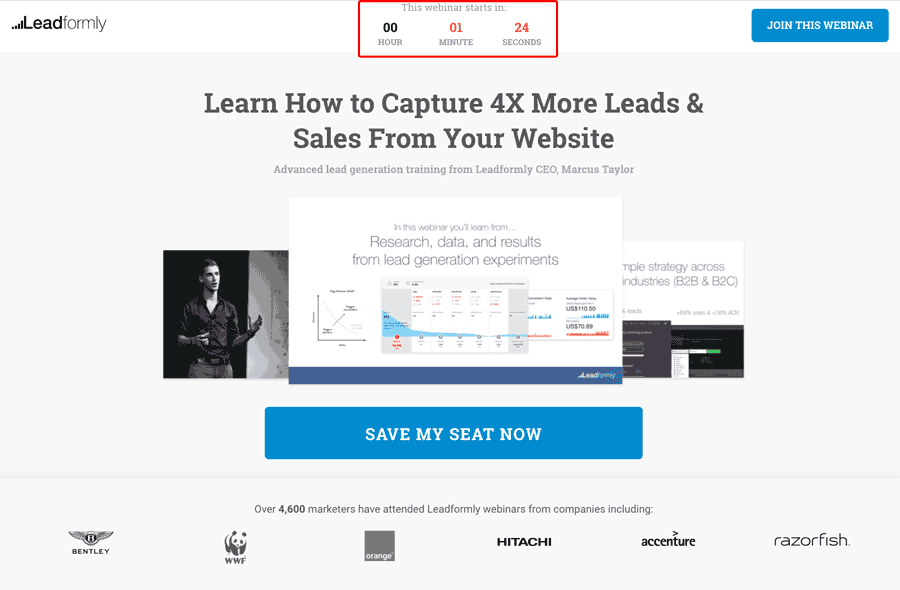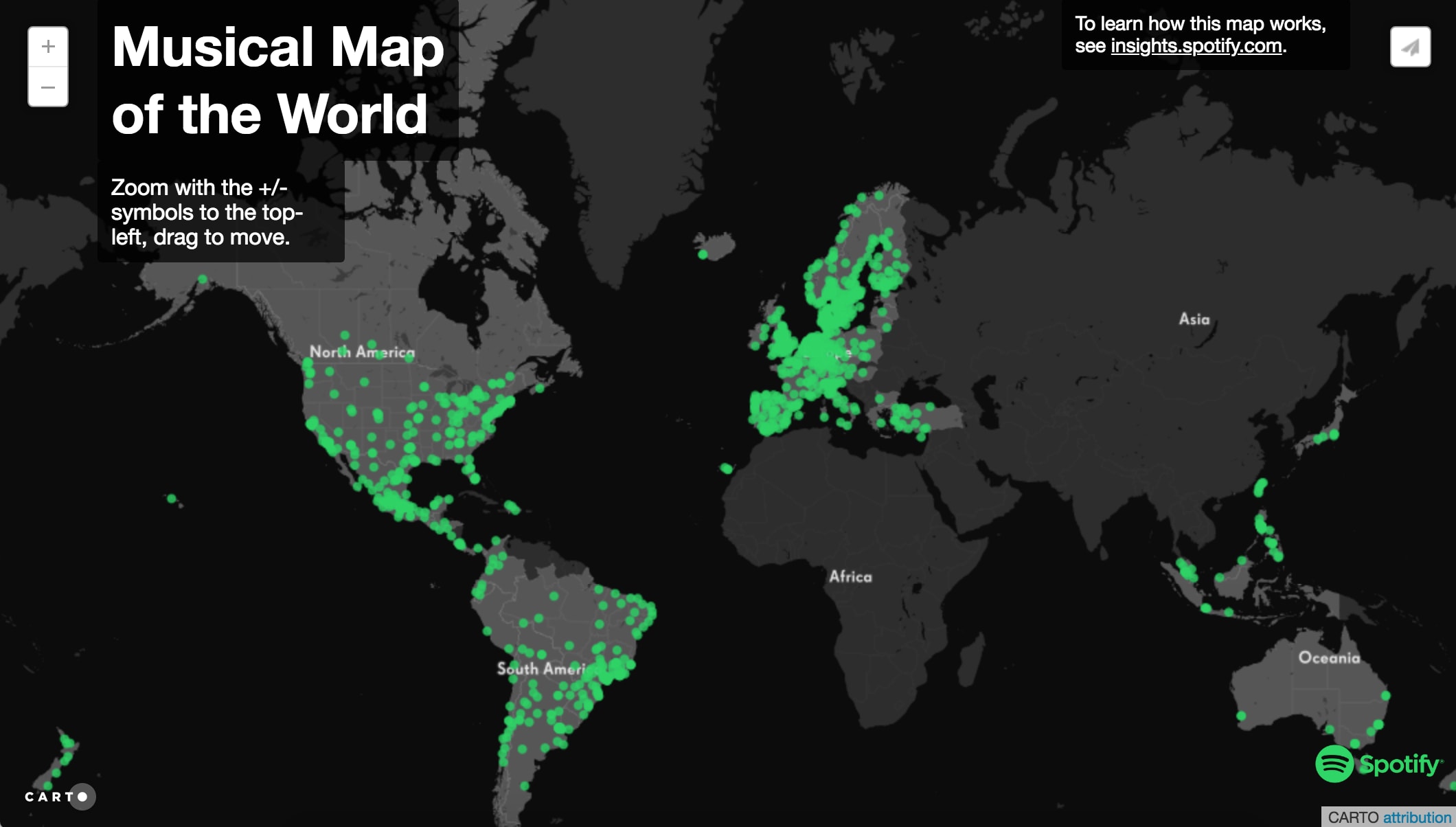Finding the right mix of B2B inbound marketing strategies can be challenging and most articles covering this topic are only going to tell you the same obvious things. Generate leads from organic search, make the most of social media and don’t forget about paid advertising – that kind of rubbish.
Yeah, thanks for that.
In this article, we’re not going to state the obvious or repeat the same old stuff you’ve read 100 times before. Instead, we’ve got seven examples of killer B2B inbound marketing strategies that have gotten proven results with us here at Venture Harbour and other B2B brands.
#1: Automated webinars
According to InsideSales’ Optimal Lead Generation Methods report, 73% of B2B marketers say webinars are the most effective way to generate high-quality leads – and we fully agree with that sentiment here at Venture Harbour.
We want to take this one step further and say that automated webinar marketing is the most effective way to generate high-quality B2B leads.

Instead of (or as well as) hosting regular live webinars you can record them and schedule them to play at repeated intervals, meaning you’ve always got something ready for new leads to sign up for and watch.
The best part is, once you set this up, it generates a regular stream of leads without you having to do anything and you can even automate your email responses to get people watching again and remind those who forget to watch the first time around.
You’ll find this drastically increases your viewership rates and the quality of your leads without you doing any extra work at all.
#2: Speaking at small industry events
Our main man Marcus Taylor spent a lot of effort speaking at events between 2012 and 2015 – anything from small meetups in London to a TED conference in Melbourne – and this is what he found out:
“Speaking at big marketing conferences is mostly ineffective.”
While the bigger marketing events were great for building credibility, they just weren’t doing much for us when it came to generating leads.
First of all, there are too many competitors pitching for the prospect’s attention. It’s like trying to promote your book in a book store: Unless you have something truly exceptional to say, you’re soon forgotten.
The bigger problem, though, is that most of the audience assumes that you’ll be busy after your talk – so relatively few people come up to speak to you.
Venture Harbour CEO, Marcus Taylor
Instead, speaking at smaller industry-specific events yield much better results. In a smaller event with 50-100 people, you can have deeper conversations with people and you can make your presentation more specific to their industry, rather than giving a generic marketing spiel.
Crucially, you’re also seen as more approachable and people are going to be keen to find out more from you.
#3: Low-frequency content marketing
In 2016, HubSpot’s Valerie Levin addressed one of the biggest problems in content marketing: brands are producing more content but engagement is down. Content marketing built a name for itself as the Mecca of all inbound marketing strategies and everyone wants some of the action, but too many brands focus on producing a certain quantity of content.
There isn’t enough focus on quality.
The problem is that low-quality content doesn’t get results and producing more duff content only gets more of the same: no results. If we apply the 80/20 principle to content marketing, this means 80% of your leads should come from 20% of your content – so why not identify what that 20% is and only produce that?
This is the principle behind low-frequency content marketing, which we employ here at Venture Harbour. Essentially, we produce less content and put more time into it. So we’re only producing high-quality content and constantly improving it to get better results.
#4: Data journalism and data storytelling

Spotify Insights: Spotify turns its user data into rich stories and experiences
One of the biggest challenges in B2B marketing is convincing people that what you say has genuine value. Every company says their products/services are special but there’s a shortage of convincing arguments when businesses are expected to prove it.
Sales speech and buzzwords aren’t going to save you here; people want to see cold, hard facts and figures backing up your claims.
People trust numbers, not opinions and this is where the best B2B brands use data journalism and data storytelling to craft compelling arguments that are strengthened by those vital figures.
The best part is, you can create 100% unique and valuable content in minutes by sourcing the right data. Every modern brand is collecting data and there are tonnes of third-party sources from government agencies, search engines and all kinds of public platforms where you can turn data into compelling stories.
#5: Connect your audience with their audience
Something marketers often forget is that their target audiences have a target audience of their own. We’re all trying to find the best way to identify leads, capture them and turn them into paying customers – and anything you can do to help your target audience to do this is going to attract attention.
This lends itself very well to data journalism, too. All you have to do is reach out to the people your target audiences are interested in or collect data from existing studies.

This is precisely what Jason Miller has done with this post for LinkedIn’s marketing solutions blog. He’s telling B2B business minds (his target audience) what B2B buyers (their target audience) want from their content marketing efforts.
All of the insights in his article are based on findings from this year’s Demand Gen Report on content preferences and he’s turned this into a piece of his own content that really connects with the needs of his target audience.
#6: Spice up the boring stuff
Let’s be honest here, B2B topics can be, well… pretty dull. The idea that business folk are happier to put up with boring content than consumers is a dangerous misconception. The people making buying decisions at your target companies are people, too, with all the same emotions and sometimes it pays to spice up the boring stuff.
no url specifiedThis is what SEO and content marketing solutions provider Conductor aims to do with its cheeky take on the SEO vs content marketing debate. The company aims to make it easier for content marketers and SEOs to get their jobs done and highlighting some of the classic areas of conflict between the two in an interesting way beats any 500-word blog post on why SEO and content are the perfect couple.
#7: Ditch the uninspiring web forms
Your B2B inbound marketing strategies are only ever going to be as good as your ability to turn interest into solid leads. When it comes to web traffic, this means getting them to fill out one of your forms and hand over the data you need – at the very least, their name and email address.
The problem is most web forms underperform and this is going to undermine all of your inbound marketing efforts.
This is why we use multi-step forms to replace traditional form designs with highly-optimised multi-step forms that encourage more people to complete our web forms. We’ve seen conversion rates increase by as much as 300% and we also use Leadformly with ActiveCampaign and other tools to create some of our most effective automated lead gen strategies – including the webinar strategy mentioned at the beginning of this article.
Don’t put up with forms that kill your conversion rates. Make the most of every lead with forms that are optimised to seal the deal and generate the highest ROI on your B2B inbound marketing efforts.
Now, it’s your turn
All of the strategies we’ve explained in this article are being used by ourselves at Venture Harbour and major B2B brands with great effect. So, now it’s your turn to take your B2B inbound marketing results to the next level by implementing them in your own strategy.




